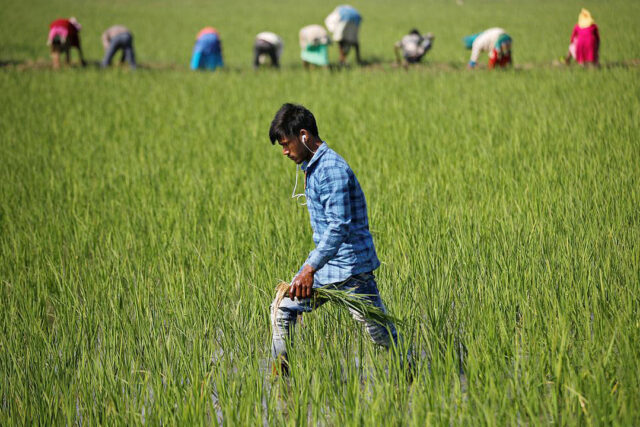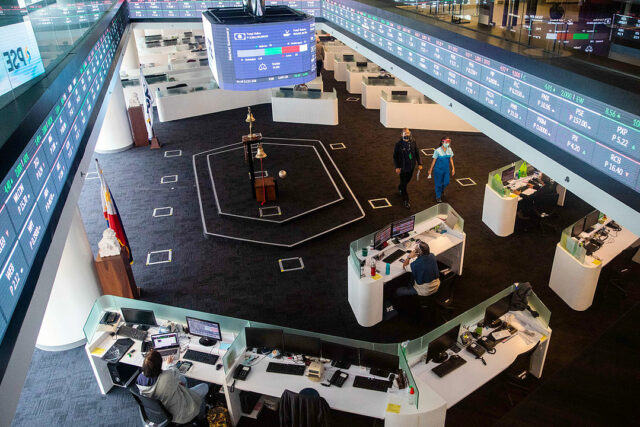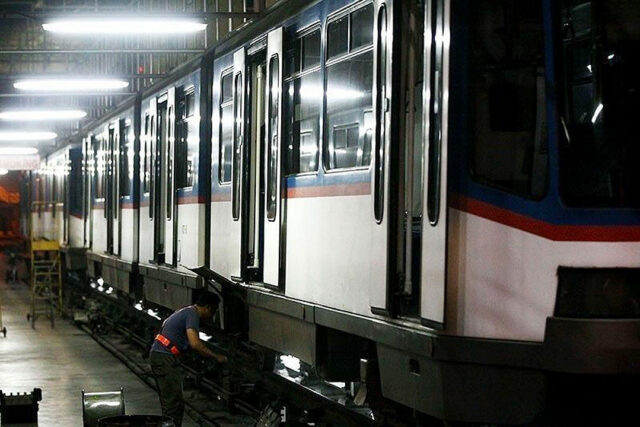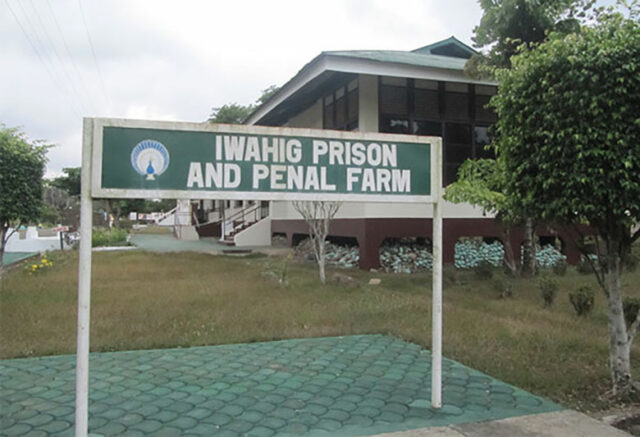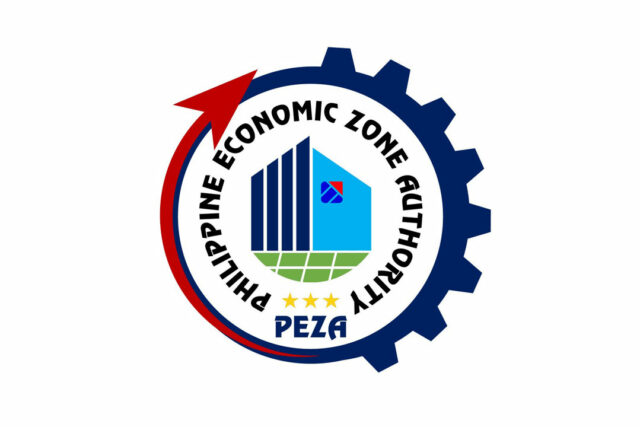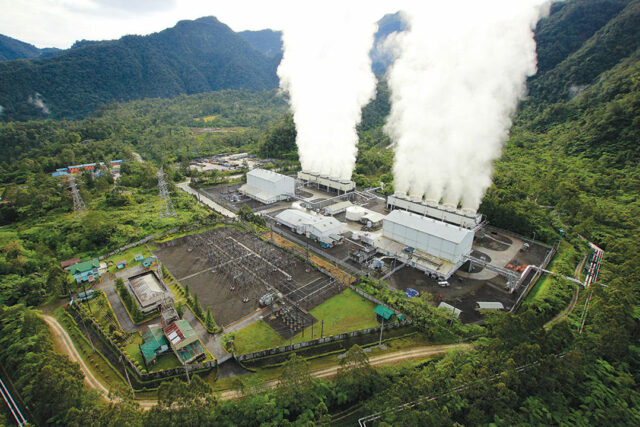Farmers in India wrestle with shift to eco-friendly methods
MUMBAI — Mumbai chauffeur Nutan Pathak is a farmer at heart. Pathak, 44, migrated from his village in eastern Bihar state over two decades ago to work in the big city on the other side of the country, hoping to supplement his family’s income reliant on wheat and rice from their 1.5-acre (0.6-hectare) farm.
His decision to leave paid off. Pathak’s steady salary from the city job kept his family afloat even as crop yields dropped consistently due to the droughts and floods ravaging his farm.
”It either doesn’t rain or it rains so much that it floods. We get just one yield every year. It wasn’t like this when I was growing up,” Mr. Pathak told the Thomson Reuters Foundation. Now he leases his field to villagers who share half of any profit with him.
But he would like to go back to his land if a push towards eco-friendly agriculture helps farmers cope with worsening climate pressures and pays off financially.
Agriculture is India’s biggest employer, supporting the livelihoods of 250 million farmers and informal laborers – but their work is getting harder as climate change makes living off farming difficult, pushing up debt, migration and suicides.
Worries over falling yields have driven up the use of chemical fertilizers that are stripping the soil of nutrients and fuelling agricultural emissions on a warming planet.
In response, green farming projects have taken root in India, where staple crops include rice, wheat, maize, sugarcane, cotton and groundnut.
But experts say the scale and success hinges on how well the approach protects poor farmers’ incomes.
“If you want to sustain agriculture as the biggest employer, and want to bring in sustainable farming, first bring living income to farmers,” said Devinder Sharma, an independent expert on agricultural policy.
“As a nation, we need to move towards agro-ecology but these (sustainable farming projects) will only bring about cosmetic changes until you provide farmers an assured income,” he added.
A government-backed guaranteed price for natural produce, subsidies to cover losses and stronger marketing channels would all help, he said.
Worldwide, rice is a staple food for more than 3 billion people while flooded paddy fields account for 12% of humanity’s methane emissions – equivalent to 1.5% of total greenhouse gas emissions – according to the Asian Development Bank.
Asia-Pacific accounts for the highest emissions from agriculture, partly because of the region’s rising use of synthetic fertilizers in rice cultivation, the bank says.
Farmers’ incomes in India, the second-largest producer of rice globally after China, are wedded to paddy yields. That makes them reluctant to shift away from conventional methods of pumping fertilizers onto fields to raise production.
But farmer Jitendra Singh in northern India has made the switch from high fertilizer use, incentivized by the prospect of extra income from generating carbon credits through lower-emitting methods, which can be traded on international markets.
He no longer transplants paddy seedlings into flooded fields, but directly sows them into the soil. Besides reducing methane emissions, that has cut water use, time needed for sowing and the use of chemical herbicides and fertilizers.
On a rice farm in eastern Odisha state, however, Gurcharan Mahanta seems uninterested in a regional project to promote millet, a long-forgotten crop making a comeback because it is resilient to droughts fuelled by climate change.
Mr. Mahanta, 54, said his high-yielding hybrid rice variety fetched him a good price, which millet would not with a small consumer base. Growing paddy is also less labor-intensive. “I go by the market demand,” he said.
More than 80% of farmers in India own less than five acres – and many keep spending on fertilizers and pesticides, hoping for good yields even though they face a crushing burden of debt.
Nearly 11,000 farmers, cultivators and agricultural laborers took their own lives in 2021, averaging about 30 deaths a day, with bankruptcy the leading cause, according to government data.
In a bid to support these smallholders and make farming more climate-friendly, India is promoting organic and natural farming, encouraging diversification to cut dependence on one major crop and incentivizing solar-powered water pumps for irrigation to reduce the use of fossil fuel power.
At a meeting of the Group of 20 (G20) agriculture ministers this year, Prime Minister Narendra Modi highlighted the disproportionate impact of climate change on agriculture in the Global South and said Indian farmers are taking up natural farming to revive the soil.
“Our policy is a fusion of back to basics and march to the future. We are promoting natural farming as well as technology-enabled farming,” he said in a speech.
Yet agricultural scientists estimate that fewer than 5% of Indian farmers have switched to sustainable farming methods, even though many are aware of the threat of global warming and the rising costs of conventional practices.
“Farmers understand climate change. They worry about rain and droughts. But they will not understand sustainable agriculture until their problems are first understood,” said Vikram Singh, joint secretary of the All India Agricultural Workers’ Union.
Despite the challenges, sustainable farming has brought some success stories, including young people who have given up city careers in tech or pharmaceuticals to return to family farms.
But the wins are patchy — and, in some cases, the eco-friendly switch has added to farmers’ stress. In the southern Indian state of Telangana, for instance, millers are turning away from genetically modified BT cotton in response to rising global demand for sustainable organic cotton.
But organic seeds are rare in India where BT dominates and cotton-processing infrastructure is designed for large volumes.
Addressing issues like these — and ensuring that sustainable methods boost crop yields and incomes — will be key to bringing would-be farmers like Mr. Pathak back to the land they love.
Wrapping up his day driving through the manic Mumbai traffic, Mr. Pathak said he pined for the clean air of his village, his jute bed and the farm-fresh gooseberries he enjoys on his annual vacation back home.
He hopes to return to that traditional rural life if the economics stack up and local markets for naturally grown produce thrive. He suggested farmers could find other income sources too like selling milk to dairies with village networks, helping them earn between harvests and protecting them from climate extremes.
Shiraz Wajih, president of the nonprofit Gorakhpur Environmental Action Group, urged farmers and agricultural scientists to work together to create solutions on the ground.
Local production of inputs for natural farming can cut costs and dependence on outside markets while creating jobs, he said. And fine-tuning farm processes suited to each region’s ecology would boost acceptance of greener methods, he added.
Wajih said most farmers do not want to leave their land, as seen during COVID-19 lockdowns when migrant factory workers returned to their farms to keep them going in tough times.
“People are aware of job options that can pay them better. But land is always the permanent address of farmers,” he said. — Thomson Reuters Foundation

